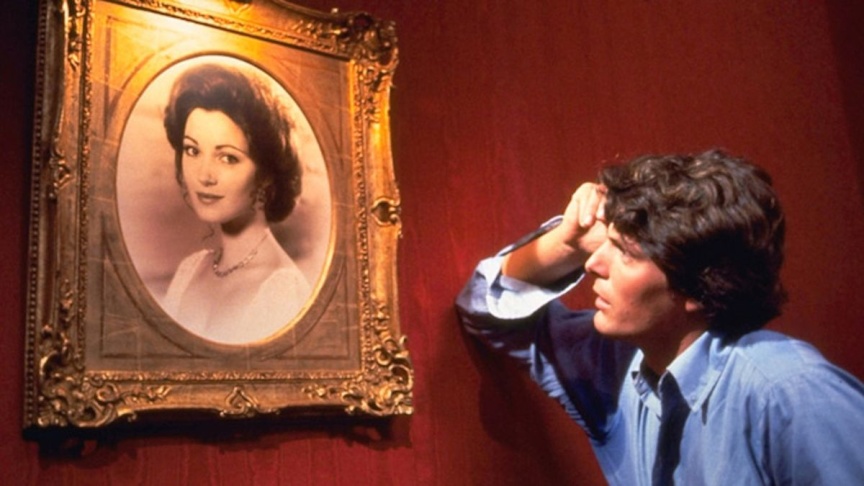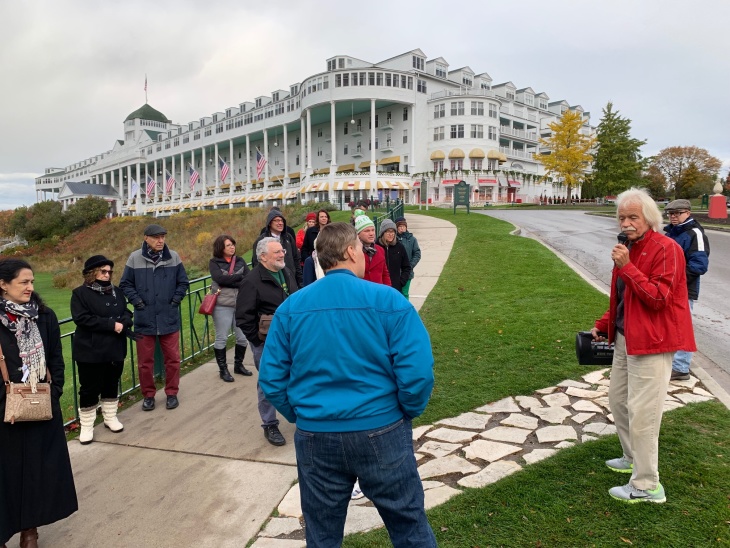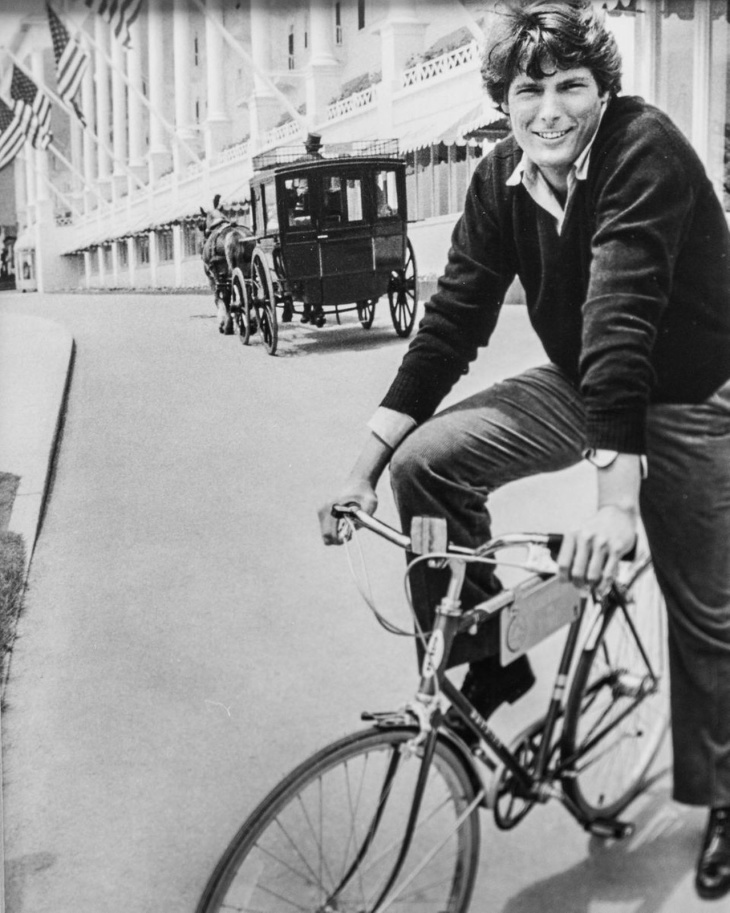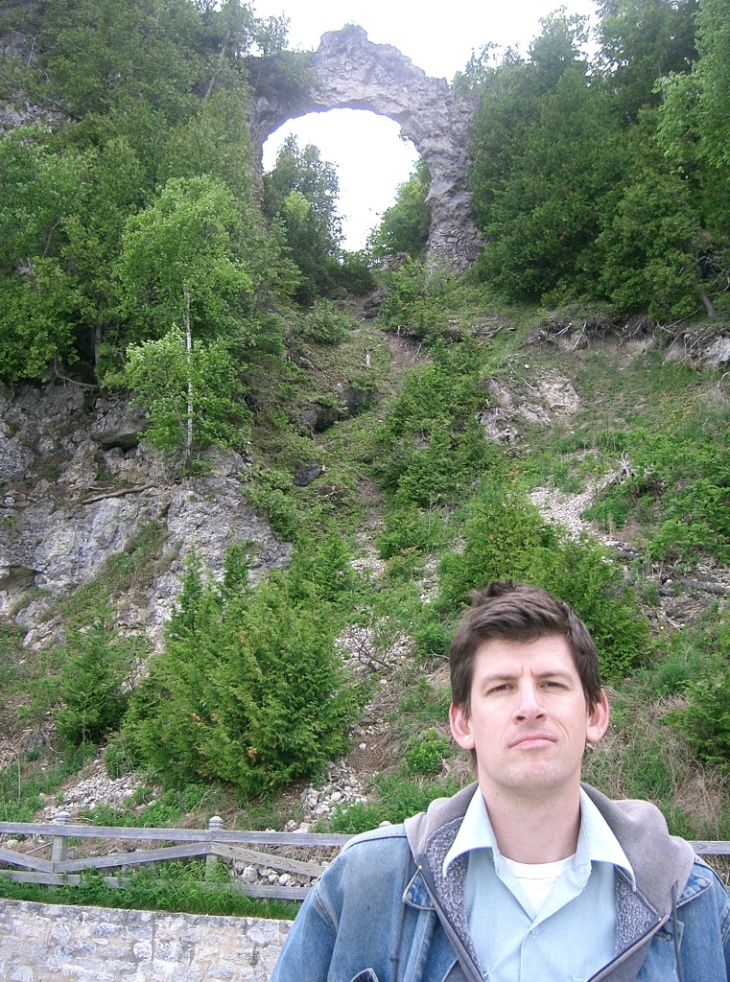
How A Time Travel Romance Starring Superman Found Its Fans: LAist

Our news is free on LAist. To make sure you get our coverage: Sign up for our daily newsletters. To support our non-profit public service journalism: Donate Now.
Saturday, Oct. 3 marks the 40th anniversary of Somewhere in Time, a film that took one of the longest, weirdest journeys to popularity. It was savaged at the box office for being stodgy, overly romantic, and out of touch. But today, it’s a cult favorite, beloved for the very qualities it was panned for. Its fan base includes retired 4-star General Colin Powell, a couple of FilmWeek critics, and me.
Here’s the thumbnail: An elderly actress shows up at the premiere of a young playwright’s new production. The playwright becomes obsessed with her and wills himself back in time 67 years to meet her as a young woman. They’re kept apart by her manager, but get one perfect day and night together — before he gets cruelly pulled back to the present and dies of a broken heart. They reunite in Heaven.
Christopher Reeve, fresh from Superman, is the playwright. Jane Seymour, then of Battlestar Galactica, is the actress. And Christopher Plummer, who had just killed as Sherlock Holmes in Murder by Decree, is her controlling manager. The bestselling score was by John Barry, and it was directed by Jeannot Szwarc — who had just saved Universal’s butt by taking over Jaws 2.
The TV and movie veteran — whose directing credits range from a 1968 episode of Ironside to a 2019 episode of Grey’s Anatomy — is almost 83, and retired last year to France.
When I reached him there this summer, he said, “What I loved about Somewhere in Time was that there was very little sex, but there was a lot of love. It was really what the French call l’amour fou, a crazy love. You know, they don’t make pictures like that anymore.” When I responded, “They weren’t making pictures like that in 1980,” he laughed and said, “I know.”
The screenplay is by Richard Matheson, adapted from his novel Bid Time Return, which he set at the Hotel del Coronado in San Diego. It would have been convenient to Hollywood — but because of the power lines, traffic noise, and modern buildings, Szwarc would have needed a time machine to shoot the 1912 scenes at the Hotel del.
Enter an actual time machine: Mackinac Island, off Michigan’s Upper Peninsula. Once the center of the fur trade, they had buried their power lines, preserved their Victorian architecture, and banned cars. People get around by horse carriage and bike.
My dad was doing PR for the Island back then, so I grew up spending much of the summer there. But unlike pretty much everyone else on the Island, I didn’t get to be an extra in the film.
Mackinac also has a giant Victorian hotel — Grand Hotel, built in 1887. Back in the day, wealthy Chicagoans went there in the summer to escape the heat. But of course, the Somewhere in Time team had to do their site visit in February. During one of the coldest winters on record. With the Great Lakes frozen from shore to shore.

Szwarc and producer Stephen Deutsch (now Stephen Simon) were being towed around the Island by islander Dan Dewey, who went on to become location manager for the film. At one point, he drove 100 yards out onto the ice so the two men — who he said looked like they were wearing the entire stock of an Eddie Bauer store — could get a good look at the Grand
Szwarc turned to Dewey and Simon and asked innocently, “Where is the water?” Both of them say nothing, but point down to the ice. “Oh,” says the director, realizing he’s standing over 100 feet of 32.1-degree water. “Can we go now?”
Even under a blanket of snow, they can see that the Island is the perfect location for the movie — but they’re still 2,400 miles from Hollywood.
“We were about to leave and Jeannot and I were talking,” Simon said. “We can’t shoot the rooms in the hotel,” because they will be occupied by guests. “That needs to be a set. There’s no place to build a set here!”
“Well you might be wrong about that,” Dewey said.
Islander Trish Martin picks up the story:
“There was an organization that had its world headquarters on Mackinac Island known as Moral Re-Armament. You may not have heard of them, but you might’ve heard of some of their offshoots, including Alcoholics Anonymous and Up with People. They made a lot of films, along with doing roadshows and so on, and they had a full film studio: editing rooms, a big soundstage, and the whole bit.”
Trish was actually in a crowd scene in Decision at Midnight, an MRA production with Martin Landau that was shot on the island in 1963.
The complex also had enough rooms for the cast and crew, solving another of the headaches from when you make a movie on a remote resort island in the middle of high season. It was kismet, and with the exception of a few early shots in Chicago, where the movie starts, the rest was shot on Mackinac from late May to late July of 1979.
They wrapped the production only 9 days over schedule, and went back to California. Everything had gone so well; nobody anticipated the cruel fate awaiting the little romantic picture they put so much love into.

But before we go there… let’s talk about how the movie handles time travel. As he’s obsessing about the actress, Reeve is told by a professor — played by George Voskovec, who was one of the jurors in Twelve Angry Men, — that you can will yourself back in time.
In the realm of time travel movies, self-hypnosis must be one of the simplest methods. The polar opposite Avengers: Endgame, which improbably namechecked Somewhere in Time during the Hulk’s big explanation of how time travel works.
Getting namechecked in the biggest movie of the millennium was such a big moment for us Somewhere in Time fans, I had to call up Avengers screenwriters Christopher Markus and Stephen McFeely.
Were they big fans? No — McFeely says it was just a list of time travel movies they included in a reshoot.
“We found that we really needed to just spend something like two minutes having the Hulk tell people that’s not how it works in this movie. We just called out the elephant in the room: other time travel movies, which were sort of getting in the audience’s way.”
“We got all tangled up in whether there were consequences or no consequences. If it’s all in your head there’s no consequences, you can do what you want,” Markus said.
The two — the most successful screenwriters in history — actually sounded a little jealous that Somewhere in Time‘s time travel method could be sketched out on a cocktail napkin, while you need a spreadsheet for Endgame.
Let’s time travel ourselves, back to 1980. When last we left our heroes, they had just wrapped what was by all accounts a very happy shoot, and it seemed like the stars were aligned for a success for Somewhere in Time. On the strength of two rapturous previews, Universal gave it wide release.
But because of a strike, the stars couldn’t support the film they made. And then came the reviews.
Leonard Maltin: Stilted dialogue, corny situations, pretty scenery.
Roger Ebert: The movie surrounds its love story with such boring mumbo jumbo about time travel that we finally just don’t care.
Vincent Canby: Somewhere in Time … does for time-travel what the Hindenburg did for dirigibles.
And that would have been that. Except for two men. The first, says Stephen Simon, was Jerry Harvey, who programmed the Z Channel — which was the first paid movie channel in Los Angeles.
“Jerry was in love with Somewhere in Time. Not only did he run it, sometimes he ran it twice in the same night. That started the ball. And then, HBO in their early early days were not buying blockbusters because they couldn’t afford it. So, what did HBO program? Movies that hadn’t worked out well at the box office.”
A Z Channel program guide shows Somewhere in Time showing 16 times in one summer week in 1981. It became one of their most popular movies. And not only were people watching it on cable, but huge numbers of people were buying the movie on VHS and the soundtrack on LP.
The second man was Bill Shepard, whom producer Simon says did more for Somewhere in Time‘s eventual success than any other person. Bill told me how he discovered the movie that would change his life.
“I was going with a very nice lady from Saint Paul,” Shepard said. “She was actually the one who suggested going to the movies. I sat there for 103 minutes literally enchanted. I’d never seen a movie like that before that affected me like that. And as the two of us were walking out of the theater, she turned to me and said, ‘Well, that didn’t do that much for me. How about you?'”
The lady soon left Shepard’s life, but the movie stayed in his heart. In 1990, he started INSITE: the International Network of Somewhere In Time Enthusiasts. And the next year, realizing the huge number of people who wanted a deeper experience, he organized the first Somewhere in Time weekend on Mackinac.

In a story filled with time travel, this weekend gathering is yet another time machine. Think of it as a Comic-Con, but where cosplayers get to actually be in Hyrule on the hunt for Ganon, or ride in a real Totoro cat bus. At the end of October each year, Somewhere in Time fans take the ferry to Mackinac, dress in period-correct clothes, act out scenes from the movie, and see the shooting locations — led by our old friend the snowmobile driver, Dan Dewey.
This is not like a con where a grumpy Lou Ferrigno charges for autographs. The cast and crew love the weekends at the Grand just as much as the fans. As Steve Hellerstein, the movie’s transportation captain, told me, “this has made my film career complete. I finally did a film that is recognized… and I’m recognized.” Just like the stars, he’s invited to and feted at the Somewhere in Time weekends.
Jane Seymour attended last year, for the third time — and her co-star, Christopher Reeve, came in 1994. There’s video of the event, and you can see him practically bouncing on the stage taking questions from the audience.
And when someone asks him where “Somewhere in Time” ranks among all the movies he made, he delivers an off-the-cuff monologue that sums up an actor’s life.
“This holds the prime place by the fireside in my heart. This is the one that I have the greatest gratitude for. It’s very hard to perform and do your work, where you put your emotions forward for the camera, for people to see… and then have it greeted officially by the sound of one hand clapping. And that people found this move and said, ‘Wait a minute! It didn’t deserve the fate that it got. It didn’t deserve to be treated that way.’ It moves me more than you can know.”
For my podcast Call Back Yesterday, I don’t pretend Somewhere in Time is another Citizen Kane. And neither does FilmWeek critic Tim Cogshell, who first saw the movie — let’s call it “Somewhere in Tim,” long before he became a professional critic.
“I romanticize this movie ridiculously,” he said. “My wife and I saw the movie for the first time in 1981 [the year they got married]. We loved it because we looked at it and I think we saw ourselves in it. Just married and bananas in love, and passionate about each other the way they are in the film. So that colored what I felt and thought about the film my entire life. I watched it again recently and it made me tear up in all the same places, and it made me long for my wife, who I lost in 2013 to cancer.”
Justin Chang, critic for Fresh Air and the L.A. Times, told me, “One of the reasons Somewhere in Time has endured is because it has the courage of its absurd convictions.” As he wrote in Variety in 2013:
Ludicrous and irresistible, Somewhere in Time belongs to a long and glorious tradition of love stories … in which time travel serves as a crucial narrative element and structuring device. It is a genre whose charms I’ve found myself unusually susceptible to in recent years. … Wildly romantic, brazenly paradoxical and stubbornly resistant to the rules of logic, these films rely for their effect on a blissful surrender of reason. To dismiss them as ridiculous or implausible is to miss both the point and the pleasure.

For me, Somewhere in Time is a touchstone to a golden summer from my youth. Back then, everyone in my life was still alive except my Grandma. My folks were alive, and all their friends, and all my friends. I never had a love affair or broke up, had never been in a car wreck or gotten drunk. I wasn’t paying my own bills, holding down a job, or really doing anything but running errands for my dad on Mackinac that summer.
As Shakespeare wrote in Richard II, “O call back yesterday. Bid time return,” because all the “life” stuff eventually happened to me — some of it quite brutally. And as the years passed, more and more I appreciated the corny themes of Somewhere in Time. And more and more I understood why older people tell and retell the stories from their past.
In his memoir Hand to Mouth, the novelist Paul Auster wrote, “Reach a certain moment in your life, and you discover that your days are spent as much with the dead as they are with the living.” To that, I would only add, “And I’m OK with that.”
KPCC’s John Rabe is the host of the new podcast Call Back Yesterday, which explores how the themes of Somewhere in Time intersect with the lives of his guests and him. The first episode features FilmWeek’s Tim Cogshell.
